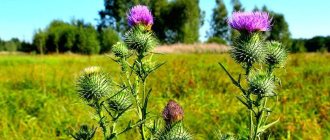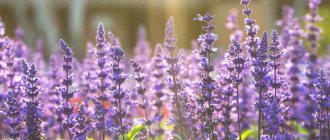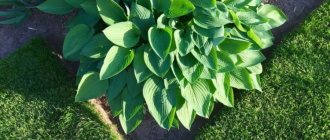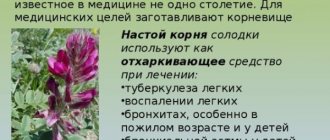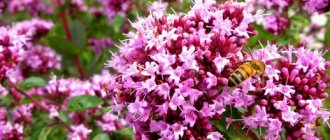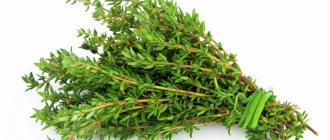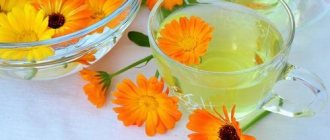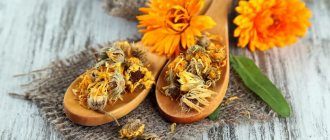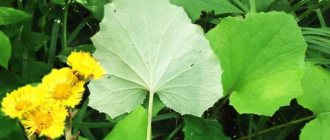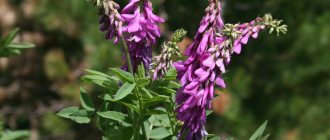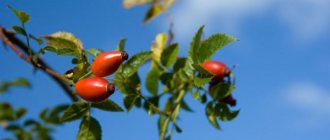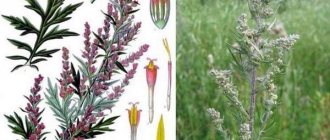Buckthorn is a small bush or low-growing tree with black fruits called wolfberries. The bark of the woody part of the plant has the most effective effect - it contains the maximum amount of useful substances. Most often, buckthorn bark is used as a laxative - it gently relaxes the intestines, enhances perilstatics, dilutes feces, facilitating their natural excretion. A distinctive feature of buckthorn bark is that it provides a delicate and mild relaxation. A person will get rid of constipation without abdominal pain and colic. However, the medicinal properties of this plant are not focused only on the laxative effect. Buckthorn bark can affect many organs, relieving various diseases.
Chemical composition
Fresh bark contains frangularoside in large quantities. When raw materials are dried and stored, this substance is oxidized, as a result of which it turns into frangulin, which has a more gentle effect on the gastrointestinal tract. In addition, buckthorn bark contains:
- Vitamin C.
An essential element in the human body. A deficiency of this vitamin can have serious health consequences. It not only strengthens the immune system, but also improves skin condition by promoting collagen production. It is also one of the most accessible antioxidants. - Essential oils.
They have antibacterial properties. They are often used to treat the respiratory system, they increase the body's resistance to infections, have a calming effect on the nervous system and can relieve symptoms of depression. - Alkaloids.
Some drugs are synthesized based on these substances. They have an analgesic effect. They also help combat stress and help improve sleep. - Tannins.
They allow you to cope with intestinal disorders, have a positive effect on the gastrointestinal tract, and remove toxins and waste from the body. They are also famous for their anti-inflammatory effect, destroy dangerous bacteria and protect against infections. - Apple acid.
Increases the tone of the body and brings it back to normal, improves metabolism and lowers blood pressure. It also restores the acid-base balance and strengthens the immune system. - Chrysophanic acid.
Improves the excretion of fluid into the intestines, is a natural dye. - Pectins.
They normalize digestive processes, improve blood circulation, and lower blood cholesterol levels. Pectins are also able to restore intestinal microflora, which is very useful after a course of antibiotics.
In addition, the bark contains magnesium, potassium, iron, manganese, copper and boron, so buckthorn bark is an incredibly useful remedy in folk medicine.
Flowers
The brittle buckthorn differs from another species, the joster, by the complete absence of thorns. Its flowers are small and bisexual. They are regular, five-petalled and collected in bunches of two to six pieces in the leaf axils. The flower petals are white on the inside and greenish on the outside.
Brittle buckthorn, whose fruits are spherical in shape, produces buds in May. Full flowering on the bush can be observed in mid-June. The fruits are initially red and then turn into black drupes. Their length reaches eight millimeters. Brittle buckthorn has high frost resistance, it is drought-resistant and tolerates shearing or shaping well. The fruits of all varieties of buckthorn are drupe-shaped juicy berries with three seeds. For the most part, they are considered inedible, moreover, even poisonous.
Collection and storage
It is necessary to collect raw materials for medicinal purposes in the spring. It is important to have time to do this during the period when the buds are swelling on the tree and the flowers have not yet appeared. It is during this period that juice begins to actively secrete. The tree becomes soft and the bark comes off easily. In addition, if you cut off the bark during this period, the tree can quickly recover.
Alder buckthorn is most suitable for treatment. The tree should be 10–15 years old, and its height should be up to 3 m. Young trees are not suitable for collecting medicinal raw materials, since useful active substances have not yet accumulated in them.
For the selected tree, you need to determine the place where the bark begins to peel off. It is better to cut the bark at a distance of more than 20 cm from the roots. The thickness of the cut raw material should not exceed more than 2 mm. To easily remove the bark, you need to make several circular cuts along the trunk. The distance between them should be within 20–30 cm. Next, you need to make one longitudinal cut, after which you can remove the raw materials. Some people simply scrape off the bark with a knife, but this is not recommended as it can leave a lot of wood behind. Any foreign growths on the bark (for example, lichens) must be cut off.
It is recommended to dry raw materials in the open air and preferably under a canopy. It needs to be spread in a thin layer on burlap or paper. It is important to stir the bark regularly so that it dries on all sides. In the morning, dew may accumulate on the bark, so it is recommended to cover it with a waterproof cloth, but you can bring it into the house. During the drying process, black spots may appear on the bark; they must be removed in time.
The raw material is considered ready when the juice stops being released. This can be determined by making a break. If the bark is dry enough, then even with a little effort a cracking sound will be heard. The red-brown color of the inside also indicates readiness. For medicinal purposes, you can only use bark that has been stored for at least a year, so you always need to prepare raw materials for future use. The bark should be stored in a well-ventilated and dry area. If these conditions are met, the shelf life can reach 5 years.
How to use for children
According to reviews, buckthorn bark for constipation is also suitable for children. But the decoction or infusion must be given very carefully. There are two opinions. Some doctors do not recommend buckthorn medicine for children. Others recommend syrup for constipation in children, but not before they are 3-4 years old.
Do not worry if your urine turns bright yellow when taking the syrup with water. Buckthorn contains chrysophanic acid, which gives color. But if your baby develops a rash and redness, or a tummy ache, you should immediately stop taking the product and consult a doctor.
Medicinal properties of buckthorn bark
The beneficial properties of this medicine are due to a rich set of useful substances. First of all, it is valued for its effect on the gastrointestinal tract. It is able to cope with constipation, and its effect is quite long-lasting. In addition, the bark begins to work after entering the intestines.
Buckthorn is also used for the complex treatment of ulcers, hemorrhoids or intestinal problems. It is a component of a herbal collection that is used to treat worms. A tincture based on buckthorn bark speeds up the healing of wounds, and taking baths with the addition of this medicine can help treat scabies.
For women
Buckthorn bark is often used in gynecology. It is prescribed to women after childbirth to soften the stool. Also, decoctions and mixtures are prescribed to women during menopause. Buckthorn bark is an excellent remedy for getting rid of acne and rejuvenating the skin. External treatment with a decoction of buckthorn bark can relieve inflammation on the skin. Also in ancient times, buckthorn bark was used as a natural hair dye. Collecting buckthorn with lemon balm and valerian can help with hormonal imbalances and menstruation problems.
For men
This medicine does not have any specific effect on the male body. Men can use it to treat skin conditions. The benefits of buckthorn for constipation are undeniable. In addition, it improves the functioning of the genitourinary system and kidneys, is often a component in medications for the treatment of hemorrhoids, relieves inflammation and reduces bleeding. It can be used not only for internal use, but also for enemas. It is useful for hemorrhoids by diluting stool, which makes the process of bowel movement less painful.
During pregnancy
During pregnancy, women often turn to traditional medicine. They are convinced that taking medications is harmful and believe that traditional medicine is completely harmless. However, it is worth remembering that such strong drugs as morphine are also synthesized from plants. Therefore, they cannot be accepted thoughtlessly. Buckthorn bark is also prohibited during pregnancy. Its use, especially long-term, can lead to miscarriage.
Video:
what herbs destroy the fetus during pregnancy Expand
For children
Giving buckthorn to children under 15 years of age is strictly prohibited; its use at this age can cause problems with the gastrointestinal tract. Older children can be given buckthorn, but not in any form and in limited quantities. With long-term use, this drug can negatively affect the child’s body, as it has a certain toxicity. Another contraindication for children is individual intolerance. In some cases, allergic reactions may occur, in which case you need to stop taking the medication. From time to time it is useful to give children buckthorn in the form of tea, but not in its pure form, but with the addition of other herbs. This will relieve fatigue and protect the body from viruses.
When losing weight
This product is a valuable assistant for people losing weight. The bark not only has a laxative effect, quickly removing processed food and toxins from the body, but also improves digestion. The metabolic process improves, a person feels light in the body, and fats begin to break down faster. It is recommended to use buckthorn in combination with protein diets and vitamin intake.
However, eating buckthorn also has a downside. For example, if a person is prone to overeating, then the bark will not have any effect, since it cannot reduce the number of calories entering the body. Buckthorn also increases appetite, which can negatively affect weight loss. Long-term use of the medicine is undesirable, since beneficial substances are also washed out of the body along with toxins.
Contraindications
Like any other plant and medicine, buckthorn has a number of contraindications. Since the decoction has a laxative effect, the medicine should not be used for diarrhea or any other conditions associated with frequent bowel movements. If you have a weak intestine that is prone to developing diarrhea, you shouldn’t consume buckthorn too much, even to treat other diseases. Buckthorn is not recommended for oral administration during pregnancy - this may unexpectedly affect its course and the development of the fetus in the womb.
A decoction of buckthorn bark should not be taken orally for colic, narrowed lumen, “acute abdomen,” or intestinal obstruction. Any serious disorder in the structure of the gastrointestinal tract is a reason to consult a doctor about such a method of treatment. External use has no special contraindications, however, upon first use, you need to carefully monitor the skin reaction in order to recognize an allergy in time.
Judging by the historical notes of ancient doctors, the laxative properties of buckthorn bark were noticed back in the 14th century. Even then, people struggled with constipation in exactly this way. Unfortunately, the modern sedentary rhythm of life and a diet based on fast carbohydrates leads to frequent intestinal disorders. Use natural remedies - treat yourself wisely!
how to take pumpkin seed oil for medicinal purposes
Buckthorn bark in folk medicine
Buckthorn bark has been used in folk medicine for a long time to treat many diseases, but mainly as a laxative. However, it is worth remembering that in large quantities it can be dangerous, so you should not be too zealous and often take medications based on buckthorn bark.
For constipation
When the digestive system is functioning normally, the intestines are released without much strain. When constipated, a person experiences certain difficulties with this and sometimes cannot go to the toilet for several days. This is very dangerous for the body, so you need to take immediate action. There are a large number of medications, but you shouldn’t get too carried away with pills; it’s better to pay attention to traditional medicine.
Krushina copes with this problem better than others. It's all about her soft action, older people love her very much for this. In addition, if constipation is often replaced by diarrhea and is accompanied by intoxication or bloating, buckthorn can also help and remove all symptoms due to its tannin content.
Buckthorn bark, prepared in any way, helps against constipation, but there is a recipe that stands out from the rest in its effectiveness:
- 1 teaspoon chopped bark;
- 200 ml low-fat kefir;
- 1 teaspoon fiber;
- a pinch of cinnamon.
Mix buckthorn with fiber, pour in kefir and add cinnamon. Mix thoroughly and leave at room temperature for 30–40 minutes. Use the mixture before meals in small portions.
For weight loss
Thanks to its composition, rich in useful substances, buckthorn becomes a faithful assistant to people losing weight. Buckthorn bark also contains anthraglycosides, which are considered a rather rare substance. Unlike other weight loss drugs, buckthorn is gentle and more effective. The most useful for people losing weight are:
- Decoction in a water bath.
Requires 2 tbsp. spoons of raw materials and a glass of water. Pour hot water over the buckthorn in a glass container, then cover. Pre-boil water in a saucepan, place the container with the broth in it and cook for 20 minutes. Next, cool the liquid to room temperature, strain, squeeze out the raw materials and pour into a permanent storage container. Drink no more than 1/2 glass per day. - Tea.
To lose weight, you can brew tea with boiling water. For one cup you will need 1 teaspoon of raw materials. Use at night, but not daily.
Against parasites
For this purpose, the collection of drugs is used. Each of them has its own advantages, and together they have the necessary effect on the body. This recipe works well against worms. To prepare it you need to take:
- 10 g buckthorn bark;
- 10 g wormwood;
- 10 g tansy;
- 10 g oak bark;
- 0.5 liters of boiling water.
Grind the herbs, mix, pour boiling water. Leave for 15–20 minutes at room temperature, then drink 2 tbsp. spoons before meals. The course of treatment is 14 days.
For problems with the liver and gall bladder
For these purposes, it is customary to use an infusion from the medicinal collection. In combination with other remedies, buckthorn tones, improves metabolism and helps remove toxins from the body. To prepare the medicine you will need:
- 1 teaspoon lemon balm;
- 2 teaspoons mint;
- 2 teaspoons of immortelle flowers;
- 2 teaspoons of buckthorn bark;
- 5 teaspoons of celandine;
- 6 teaspoons of rose hips.
All ingredients must be thoroughly chopped for convenience and mixed. It is not worth pouring all the raw materials at once; it is better to prepare a new portion every day. It will require 1 teaspoon of the mixture, pour a glass of boiling water. Drink the medicine with honey regardless of meals. It is advisable to store the mixture that is not currently in use in a cloth bag. The minimum course of treatment is a week, but it can be adjusted upward depending on the patient’s condition.
We recommend reading:
aspen bark in folk medicine
Read
For stomach pain
Despite the ability of buckthorn to cope with this problem, it is still recommended to consult with your doctor before taking the medicine, since in some cases buckthorn can make it worse. If the doctor allows you to take the drug, he will indicate the dosage, which in no case should be violated. The permitted dose of the drug depends on the disease causing stomach pain, but usually it does not exceed 50 ml. The drug should be taken before meals. The duration of the course should not exceed 14 days.
Decoctions are taken as an anesthetic. For 200 ml of boiling water you will need 2 tbsp. spoons of raw materials. Pour boiling water over the crushed buckthorn and place in a water bath for 15–20 minutes, then leave for an hour. Strain, then return the original volume of liquid with warm water. Drink 1/2 glass before bedtime.
After starting to take the drug, side effects such as flatulence or abdominal pain may occur. In this case, you need to reduce the dosage of the medicine.
For scabies
This disease causes serious discomfort to people. And if you do nothing, the consequences for the body can be disastrous. An infusion of buckthorn bark is an excellent antiseptic; it can eliminate itching and other unpleasant sensations in skin diseases.
To treat the skin, prepare a classic decoction - 2-3 tbsp per glass of boiling water. spoons of bark. Leave for several hours at room temperature. Use this decoction externally, applying it only to clean skin. It is necessary to treat the skin at least three times a day, lubricating the damaged areas of the skin with the infusion.
Depending on the severity of the disease, the course of treatment lasts 14–20 days. If necessary, it can be extended without fear, since the external use of buckthorn bark has no side effects.
For hemorrhoids
Often the cause of this disease is chronic constipation, so the use of buckthorn bark as a medicine is doubly justified. With constipation, stool becomes harder, and when released, it provokes an exacerbation of hemorrhoids and opens bleeding. Infusions and decoctions are used to treat hemorrhoids. They not only help to liquefy stool, which makes defecation easier, but also relieve inflammation and eliminate bleeding.
You can drink infusions with decoctions or make enemas based on them. The choice of method of application is determined by the severity of the disease. To prepare a medicinal decoction, you will need 1 teaspoon of bark and 0.5 liters of boiling water. Pour water over the raw material and leave to infuse for 10 hours. Warm the medicine slightly before use.
Restrictions on use
Long-term treatment with buckthorn is addictive, as a result of which you should either double the dose or use another laxative. With prolonged use of large dosages of buckthorn infusion, an increase in blood volume in the pelvic organs is possible, which is undesirable in such cases as:
- pregnancy (risk of miscarriage);
- gynecological diseases;
- predisposition to uterine bleeding.
Preparations based on buckthorn are not used when there is:
- malignant tumors in the digestive organs;
- Crohn's disease;
- lactation;
- uterine bleeding.
The duration of treatment of constipation with infusions and decoctions of buckthorn is 8-10 days. You must first avoid simultaneous use of buckthorn with other laxatives. This can cause bowel irritation, reduce bowel movements and significantly worsen constipation.
The patient must strictly follow the permissible therapeutic doses, which are prescribed by the attending physician specifically for each case. Exceeding prescribed doses may cause convulsions, nausea, vomiting and pain in the abdominal area.
Types of healing compounds
There are a large number of ways to prepare medicine from buckthorn bark. It can be used not only for internal use, but also for external use. Each cooking method targets specific health problems and enhances certain beneficial properties of the raw material. Buckthorn can treat a large number of diseases, but it is important to choose the right preparation method and dosage.
Infusion
Infusion in a water bath can successfully combat constipation. However, this medicine does not act immediately, but rather after several hours, so it is recommended to take it before bed. Also, the infusion can relieve suffering due to hemorrhoids. You can drink the medicine or do enemas.
To prepare, you will need 1 teaspoon of crushed buckthorn bark and 0.5 liters of boiling water. Pour boiling water over the raw materials, then cover and leave to infuse at room temperature for at least 10 hours. Take small sips throughout the day.
It is also worth remembering that this remedy is a diuretic and can fight inflammatory processes.
Tincture
Alcohol tincture is especially effective for treating skin diseases. It relieves inflammation, removes acne, cleanses pores. For these purposes, it should be used externally, wiping problem areas with a cotton swab dipped in the tincture.
To prepare it you will need 1 tbsp. a spoonful of buckthorn bark and 0.5 liters of alcohol, diluted to a strength of 25–30%. Alcohol must be diluted with clean water. It is advisable to pour the tincture into a glass bottle and store it in it. Grind the raw materials, pour alcohol, seal the bottle tightly and place in a dark place for 2 weeks. After this period, strain the liquid.
Decoction
Of all the methods for preparing medicinal raw materials, the most effective is a decoction. It is also used to treat constipation, but, in addition, it can normalize the functioning of the liver and gall bladder. It can also be used to treat acne and other skin conditions.
For the decoction you will need 1 tbsp. spoon of raw materials and 0.5 liters of water. Pour water over the buckthorn, bring to a boil, then reduce the heat and simmer the broth for another half hour. Remove the finished medicine from the heat and cool at room temperature. Use 1 tbsp. spoon.
Tea
Hot buckthorn bark tea can be used for many purposes. This is a good sedative that can improve sleep and relieve tension in the nervous system. This tea also strengthens the immune system well. However, do not forget that buckthorn is a strong laxative. Tea retains this feature, so you should not drink it too often. It is recommended to drink it no more than one cup every 2-3 days.
Buckthorn bark tea is loved by people who are losing weight, and it is often included in their diet menu. However, exceeding the permissible dose can have dire consequences for the entire body as a whole, even leading to convulsions. If slight dizziness occurs, you should immediately stop drinking the product. In addition, long-term use of this drug is addictive, and in the future it is difficult for the intestines to adapt to a new mode of operation.
Another side effect of tea is a strong diuretic effect, so you should drink plenty of liquid, ideally mineral water.
Buckthorn bark tea should not be given to children under 15 years of age, even when combined with other herbs. It is also contraindicated for pregnant and nursing mothers.
The tea recipe is very simple. You will need 1 teaspoon of crushed bark and a cup of boiled, cooled water. The bark should be filled with water and left for 12 hours at room temperature. Since the tea must steep for so long, it is advisable to pour it in the morning and stir it regularly throughout the day. After 12 hours, strain, heat a little and drink before bed. You can pour boiling water over the bark, but its effectiveness will be slightly lower.
Often, a collection is used to prepare tea, which includes buckthorn bark (20 g), caraway fruits (10 g), chamomile flowers (10 g) and centaury (5 g). Grind the mixture thoroughly and mix, add warm water and leave for 10–12 hours. Strain and reheat before use.
From worms
Buckthorn bark, whose medicinal properties are provided by a large number of valuable components, is included in a complex of antiparasitic mixtures. Considering the small specific gravity of this plant relative to the entire mixture, it is also allowed for use by children.
Main ingredients: tansy, hibiscus, oak bark, buckthorn and wormwood in equal parts. Buckthorn affects the body by stimulating intestinal motility and normalizing metabolic processes. The laxative effect helps remove parasites.
For prevention, it is recommended to use the mixture in a double course every six months.
- A specially selected set of herbs is brewed for about 10 minutes according to the tea principle.
- The strained infusion is consumed a quarter of an hour before meals three times a day.
- The course of treatment is 3 weeks.
- After this you need to take a break: 7 days. Then take a second appointment.
Application in cosmetology
For cosmetic purposes, special brittle buckthorn is used. The name speaks for itself; the branches of this tree break at the slightest effort. A decoction of the bark of this tree has a pronounced anti-inflammatory effect, which allows it to be used effectively to treat acne and acne. For problems with oily skin, it is enough to moisten your face with alcohol tincture every day.
For other skin problems, acne, clogged pores, healing baths with buckthorn bark can help. It is necessary to prepare a small amount of decoction, then pour it into a hot bath and stir thoroughly. The effect of medicinal raw materials can be enhanced by adding oak bark, chamomile and other medicinal herbs to the decoction. In addition, baths with buckthorn bark have a calming effect. They can help you relax after a hard day and calm your nervous system.
A decoction of the bark helps combat dry skin. To do this, you need to apply lotions to your face. Make cutouts for the eyes on a piece of fabric, then dip in the broth and apply to your face. Once the fabric is dry, you can moisten it a little without removing it from your face. The drug will draw out all microbes and harmful substances from the skin, so in no case should you use the same tissue for the next procedure. One session is enough for the healing effect to appear, acne becomes less noticeable, and inflammation decreases.
In addition, in cosmetology, buckthorn’s ability to restore collagen in the skin is valued, which allows it to rejuvenate. A decoction of buckthorn bark should be poured into an ice tray, and when the liquid freezes, wipe your face with this ice in the morning and evening. 30 days of continuous therapy is enough for the effect to appear. Wrinkles will become a little less noticeable, and the skin itself will become more elastic.
In ancient times, buckthorn bark was used as a natural hair dye. She can give them a chestnut tint. To dye your hair with buckthorn, you need to prepare a strong decoction. You will need at least 3 tbsp. spoons per 0.5 liters of water. Pour boiling water over the raw material, then cover and leave at room temperature. The decoction must steep for a long time, at least 3 hours, so that the coloring substances have time to get into the water. As soon as the decoction is ready, you need to apply it over the entire length, then wrap your hair in a towel and leave for an hour. To make the color saturated, several procedures in a row will be required.
We recommend reading:
use of pine cones in cosmetology
Read
